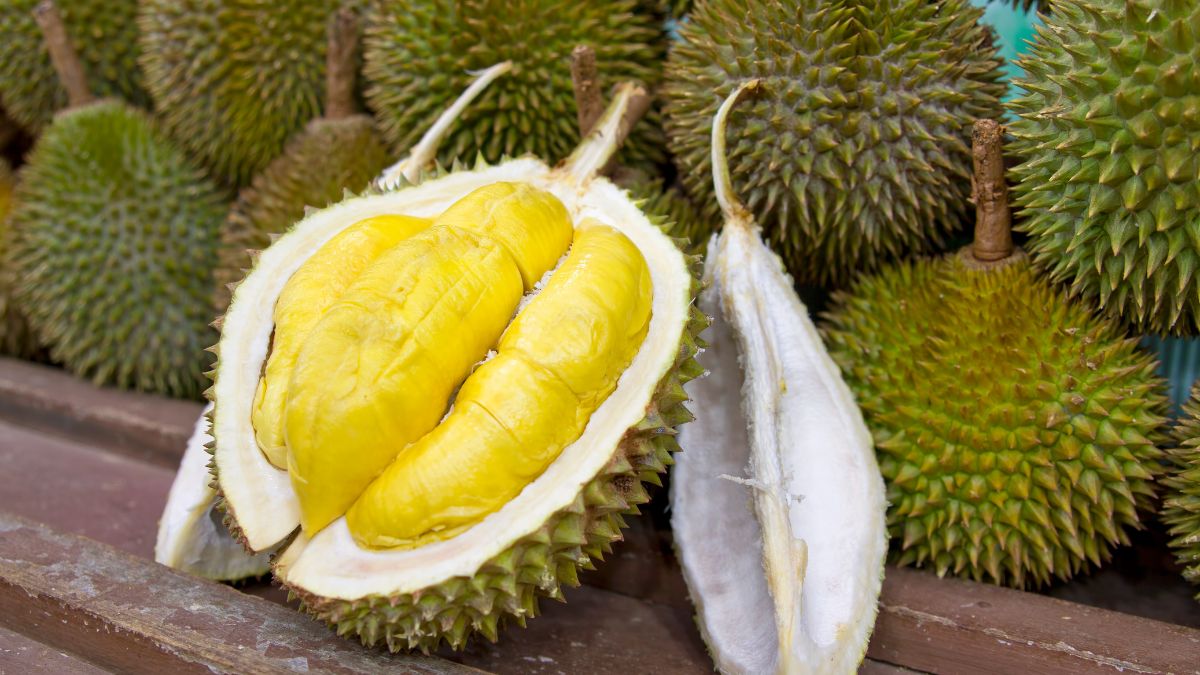Physiotherapy for Stroke Patients: Techniques for Improved Mobility
Physiotherapy for Stroke Patients: Techniques for Improved Mobility
Durian: Unique Nutrients and Smell Sensitivity

Durian: Unique Nutrients and Smell Sensitivity
In the vast tapestry of the world’s fruit varieties, the durian stands as a culinary paradox, cloaked in a husk of spikes yet cradling a flesh that divides opinion like no other. Revered by some as the “king of fruits” and regarded by others with a wary distance, the durian is an enigmatic emblem of nature’s whimsy. This narrative delves into the heart of the durian’s mystique, exploring the unique nutrients it offers and the peculiar sensitivity its smell evokes, crafting a tale that whisks the reader away to the very orchards where this fruit commands respect and curiosity.
Imagine venturing into the dense, tropical forests of Southeast Asia, where the air hums with the symphony of nature. There, amidst the emerald canopy, thrives the durian, its formidable exterior guarding a treasure trove of flavors and nutrients. The experience of encountering a durian is nothing short of awe-inspiring. Its formidable spikes promise adventure, while its size hints at the bounty within. But it is the durian’s aroma that announces its presence long before it comes into view—a scent so potent and divisive it has become the stuff of legend.
The durian’s smell is a natural wonder, a complex bouquet that has puzzled and fascinated scientists and food enthusiasts alike. To some, it is reminiscent of ripe cheese and almonds, a savory aroma interlaced with sweetness. To others, it evokes less pleasant comparisons. Yet, this divisive scent masks the durian’s nutritional prowess. Rich in vitamins C and B, dietary fiber, and a host of minerals such as potassium, magnesium, and iron, the durian is a powerhouse of health benefits. It supports the immune system, aids digestion, and helps maintain healthy skin and blood pressure levels. The durian’s flesh, creamy and custard-like, is not just a culinary adventure but a journey into wellness, offering a bounty of nutrients that underscore its regal status among fruits.
But why does the durian’s smell provoke such extreme reactions? The answer lies in the complexity of its aroma compounds, which include esters, ketones, and alcohols, combined in such a way that the human nose can interpret them in remarkably different manners. This olfactory sensitivity varies greatly from person to person, influenced by genetic makeup, cultural background, and personal experiences, making the durian a fascinating study in the subjectivity of taste and smell.
The tale of the durian is one of contrast and confluence, where its formidable exterior and divisive aroma veil a heart rich in both flavor and nutrients. It stands as a testament to the diversity of nature’s bounty, challenging our perceptions and inviting us to explore beyond the familiar. The durian’s journey from the wild orchards of Southeast Asia to the tables of the world is a narrative of curiosity, daring, and discovery—a reminder that sometimes, the most rewarding treasures are those that require us to venture past the spikes and embrace the unknown.
As this narrative weaves through the sensory tapestry of the durian, it leaves us awestruck at nature’s ability to conjure such complexity and contradiction within a single fruit. The durian’s story is a vivid reminder of the wonders that lie in wait for those willing to explore the depths of taste, smell, and nutrition, offering a unique perspective on the richness of the world’s flora.